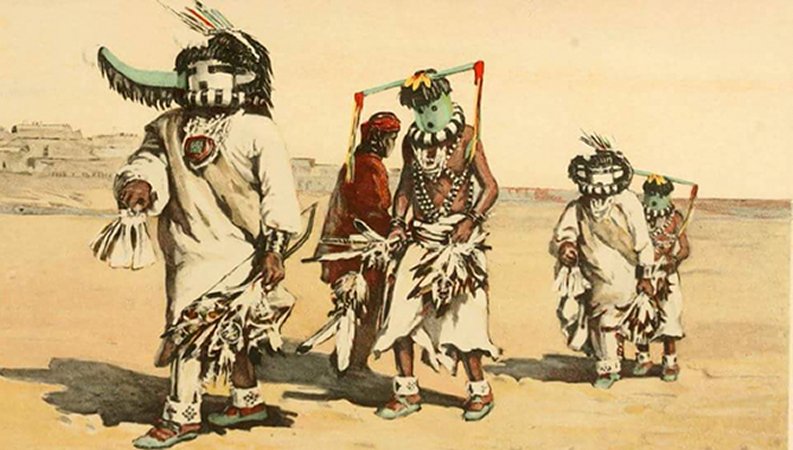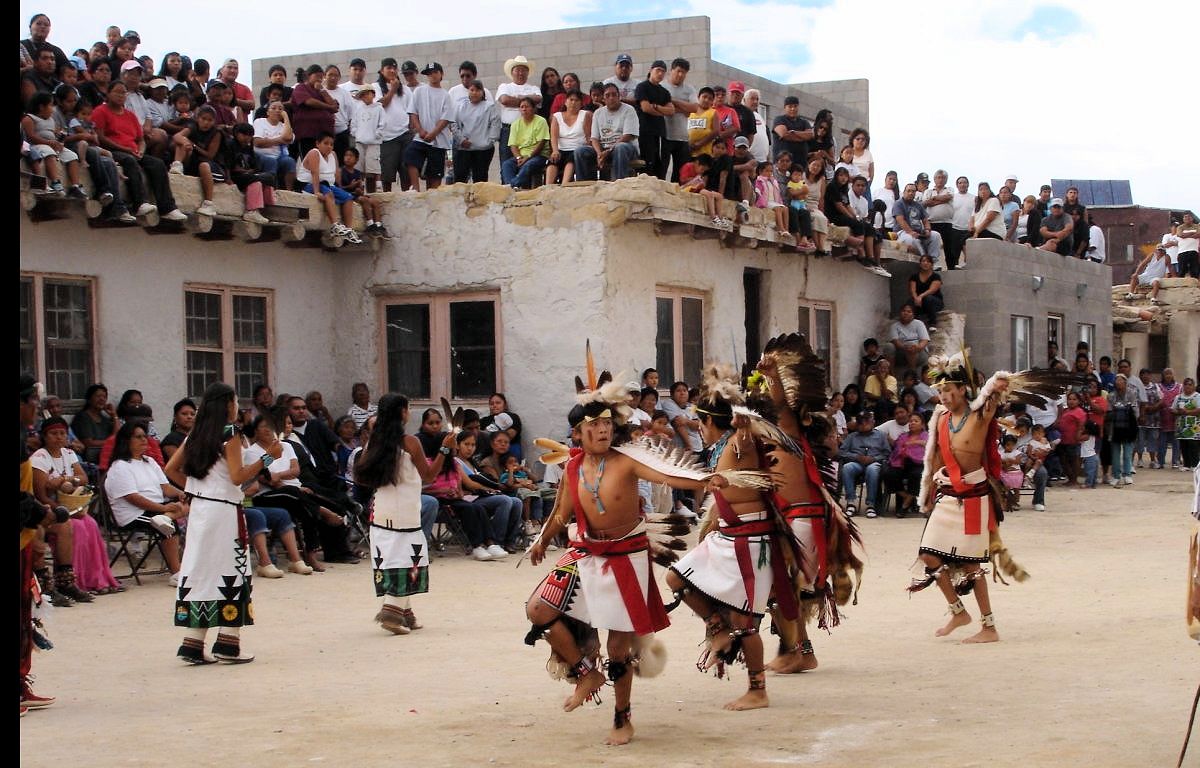
Zuni Pueblo: Guardians of Time, Masters of Artistry in the American Southwest
In the sun-drenched high desert of New Mexico, where vast mesas rise like ancient sentinels and the sky stretches in an uninterrupted canvas of azure, lies a place of profound antiquity and vibrant cultural continuity: Zuni Pueblo. More than just a collection of adobe homes, Zuni is a living testament to thousands of years of human resilience, spiritual depth, and unparalleled artistic ingenuity. It is a place where the past breathes alongside the present, where ancient traditions are not merely remembered but actively lived, shaping the identity of the A:shiwi, the Zuni people, who call this sacred land home.
The story of Zuni begins long before recorded history, rooted in the ancestral Puebloan cultures that thrived across the Southwest. Archaeological evidence suggests continuous human occupation in the Zuni River valley for at least 3,000 to 4,000 years, with the direct ancestors of the modern Zuni establishing settled agricultural communities around 700 AD. By the 14th century, the Zuni had coalesced into six major villages, sophisticated urban centers that hummed with life, trade, and ceremony. This intricate network of communities, centered around the Zuni River, was the thriving civilization that the Spanish conquistador Francisco Vázquez de Coronado stumbled upon in 1540.
Coronado, lured by tantalizing rumors of the "Seven Cities of Cíbola," believed to be laden with gold, arrived at Hawikku, one of the largest Zuni pueblos. His disappointment upon finding mud-brick villages rather than glittering cities is well-documented, yet his expedition marked a pivotal, often violent, turning point in Zuni history. Despite the brutal imposition of Spanish rule, disease, and attempts at forced conversion, the Zuni people endured. Their strategic location, somewhat isolated from the main Spanish colonial routes, allowed them to retain much of their traditional culture and governance, albeit with significant adaptations. This resilience, born of a deep spiritual connection to their land and an unwavering commitment to their ways, is a defining characteristic of the Zuni people.
At the heart of Zuni cosmology is the concept of Itiwana, "the Middle Place." For the Zuni, their primary village, Halona Itiwana, is not merely a geographic point but a sacred center – the navel of the world, a place of balance and spiritual significance. This profound connection to place is further embodied in Dowa Yalanne, or Corn Mountain, a majestic mesa rising sharply from the valley floor. Historically, Corn Mountain served as a refuge during times of conflict, a natural fortress where the Zuni could retreat and preserve their way of life. Today, it remains a sacred site, a source of spiritual power and a powerful symbol of Zuni identity and perseverance.
The social and spiritual fabric of Zuni society is rich and complex. It is a matrilineal society, meaning lineage and property are traced through the mother’s side. Clan systems, traditionally linked to animals, elements, or plants, play a crucial role in social organization and ceremonial life. The Zuni spiritual world is vibrant, guided by a sophisticated ceremonial calendar and the veneration of the Kokko (often referred to as Kachinas by outsiders, though the Zuni use their own term), sacred masked beings who represent spirits of the ancestors and natural forces. These Kokko appear during elaborate public dances and ceremonies, bringing blessings, rain, and health to the community. The Zuni language, a language isolate unrelated to any other known language family, is another cornerstone of their cultural identity, carefully preserved and actively spoken by most tribal members.

However, it is perhaps in their artistic traditions that the Zuni Pueblo most vividly expresses its unique cultural essence and profound connection to the spiritual world. Zuni artistry is renowned globally, distinguished by its meticulous craftsmanship, intricate detail, and deep symbolic meaning.
Jewelry: Mosaics of Stone and Silver
Zuni jewelry is instantly recognizable for its breathtaking precision and the sheer artistry of its stone cutting and setting. Unlike Navajo jewelry, which often emphasizes large, solitary stones, Zuni work is renowned for its intricate mosaic of smaller, meticulously cut pieces, often set in sterling silver.
One of the most iconic Zuni styles is needlepoint, where tiny, hand-cut slivers of turquoise (or sometimes coral, mother-of-pearl, or jet) are shaped into delicate ovals, rounds, or teardrops, then set individually to form intricate patterns. The effect is one of delicate lace, a testament to the artist’s patience and skill. Equally striking is channel inlay, a technique where stones are precisely cut to fit snugly into silver channels, creating a smooth, mosaic-like surface. This method allows for complex pictorial designs, often depicting birds, flowers, or geometric patterns. Cluster work involves arranging many small, round or oval stones around a larger central stone, creating a floral or starburst effect.
The materials themselves hold significance. Turquoise, revered for its sky-blue hues, is considered sacred and protective. Shell, particularly mother-of-pearl and abalone, adds luminescence, while red coral provides a vibrant contrast. Each piece of Zuni jewelry is more than an adornment; it is a wearable prayer, imbued with the spirit of the maker and the protective qualities of the stones.
Fetishes: Carved Spirits of the Land
Another hallmark of Zuni artistry are their renowned animal fetishes. These small, carved figures, usually made from natural stones like serpentine, jet, alabaster, or pipestone, represent various animals that hold spiritual significance in Zuni culture. The most common fetishes include bears (representing strength and healing), wolves (loyalty and hunting prowess), badgers (perseverance), mountain lions (leadership), eagles (vision and freedom), and frogs (rain and fertility).
Zuni carvers believe that a portion of the animal’s spirit resides within the stone, and the act of carving brings that spirit forth. Fetishes are not mere decorative objects; they are sacred tools, used in ceremonies, for protection, healing, and to aid in hunting. They are often adorned with small bundles of turquoise, coral, and shell, tied with sinew or string, which are considered offerings or "power bundles" that amplify the fetish’s spiritual energy. The simplicity of the carving often belies the profound spiritual power attributed to these objects, making them deeply personal and culturally significant.
Pottery: The Heartline of Tradition

Zuni pottery, though perhaps less prolific today than jewelry, possesses a distinct and revered aesthetic. Historically, Zuni potters crafted exquisite utilitarian and ceremonial vessels using traditional coil-building techniques, local clays, and natural pigments. Their pottery is typically characterized by a white or cream slip, decorated with geometric patterns and iconic motifs in black and red.
The most famous Zuni pottery motif is the "deer with a heartline." This depiction of a deer, often with elongated antlers and a stylized body, features a distinctive line running from its mouth to its heart. This "heartline" represents the breath of life, the spiritual essence, and the life-giving connection between the animal and the Zuni people. Other common motifs include rain birds, spirals, and intricate geometric designs that reflect elements of their natural world and cosmology. While the art of pottery experienced a decline in the early 20th century due to the availability of manufactured goods, there have been significant revitalization efforts in recent decades, with contemporary Zuni artists drawing inspiration from ancestral forms while infusing their own innovative spirit.
In the modern era, the Zuni Pueblo faces a complex array of challenges, from preserving their unique language in a dominant English-speaking world to navigating issues of land and water rights, economic development, and cultural appropriation. The Zuni Tribal Council works tirelessly to balance economic progress with the safeguarding of their ancient traditions. Tourism, while providing economic opportunities, must be carefully managed to ensure respect for sacred sites and ceremonies. The Zuni have also been at the forefront of efforts to repatriate ancestral remains and sacred objects from museums and private collections, a crucial step in healing historical wounds and reclaiming their heritage.
Despite these challenges, the Zuni people continue to thrive, their resilience as enduring as the mesas that surround them. The children of Zuni Pueblo are taught their language, their history, and the intricate skills of their ancestors. They are the inheritors of a culture that has weathered centuries of change, adapting and evolving while holding fast to its core values.
Zuni Pueblo is more than just an ancient settlement; it is a living, breathing cultural landscape where every stone, every pattern, and every ceremony tells a story of survival, faith, and artistic genius. It stands as a powerful reminder that true wealth is not found in gold, but in the unbreakable spirit of a people, their deep connection to the land, and the vibrant artistry that expresses the very heart of their existence. To visit Zuni is to step into a place where time is measured not in years, but in generations, and where the echoes of ancient spirits resonate in the skilled hands of today’s masters.